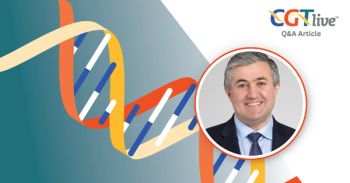
Detecting Translocations in Gene Edited Cells
Vanee Pho, PhD, the chief product officer at Mission Bio, discussed the company’s Genome Editing Solution.
Gene editing technology holds great potential to advance the treatment of a wide array of disease, but much of this technology also carries the risk of causing off-target translocations. These translocations can be difficult to detect, however, with traditional bulk sequencing methods.
Mission Bio is currently seeking to advance detection of translocations through its Tapestri Genome Editing Solution, which the company recently updated with a new translocation analysis feature. At
CGTLive: Can you give some background about what the company presented at ASGCT this year?
Vanee Pho, PhD: We've got a few presentations going on here. Today at ASGCT, we have a few posters, one specifically from the Mission Bio R&D team, and this is a poster highlighting the potential effects of genotoxicity in cell and gene therapy. This really highlights our product offering around our genome editing solution, where we've added on an additional capability around translocations. Translocations basically occur as a result of a double-stranded break from gene editing. Parts of the chromosome can transfer to another part of the chromosome, or to another to another chromosome altogether. This can be considered pretty dangerous, as some fusions could occur and this could be related to cancer or could regulate genes in different ways that are not favorable. We have a poster highlighting this capability of translocations, as well. What's interesting with this is just being able to characterize these off-target effects as a result of gene editing with translocations, and really being able to show that with our unique panel design, we can detect new translocations that result out of gene editing, which is pretty unique to our capability.
Then on top of that, we further go into understanding what we call genomic stability. When these double stranded breaks happen, there could be a loss of parts of the chromosome, which, again, is pretty detrimental to patients. So here we're highlighting our single cell [analysis]. Now we can do this at single cell resolution, both for translocations, really at the highest sensitivity compared to other bulk measurements, and understand the overall genomic stability. So that's the one poster we have.
Secondly, I just wanted to highlight we have Dr. Ayal Hendel, PhD, [the principal investigator at the Bar-Ilan University in Israel] speaking today, and he'll be highlighting the importance of understanding off-targets in immune therapies. His lab is specifically interested in understanding immune therapies around sickle cell disease. We've collaborated with him to further understand and characterize these off-targets. What he's done is he's used his bulk measurements of a prospective pipeline and we've also worked together with him in our genome editing pipeline with translocations, thus showing that we're able to detect, at a very high sensitivity, some of these off-target effects that he's seeing in particular cell lines.
What were the key points presented?
Some of the key highlights would be the importance of understanding these off-targets and then having it at the sensitivity—specifically at the single cell level. There's so much that bulk techniques can show... But that single cell [analysis] takes us an extra step forward in understanding down to the actual number of cells that have these translocations, which is something bulk techniques cannot show.
How would you summarize the big picture implications that doctors and the healthcare community should take away from this?
The standard is using these bulk technologies—whether they be rhAmpSeq, using next generation sequencing, or digital polymerase chain reaction—but while those are pretty comprehensive, it only takes you so far in terms of understanding off-targets and the true implications of what an off-target could do if it goes undetected in the patient. I think this is where being here at ASGCT is pretty impactful in terms of spreading the word and having the understanding that we should be understanding these—whether it be chromosomal rearrangements or chromosomal loss that could occur as a result of gene editing—the ultimate goal is to create impactful therapies.
Have there been any major challenges in this research so far?
I would say that sometimes we feel like single cell is a bit early, meaning that there's a lot of information. There's challenges in what to do with all this information. So we're working also actively in terms of refining our solution and making it more digestible to scientists to further adopt our technology. Then there's always this inertia of "this is a new technology, I'm used to what I'm doing"; doing something new has its own inertia of adoption.
This transcript has been edited for clarity.
REFERENCES
1. Mission Bio’s new translocation analysis offers insights into critical safety assessment for gene-edited cell products. Mission Bio. April 25, 2020. Accessed June 6, 2024. https://missionbio.com/press/translocation-analysis/
2. Hendel A. Precise measurement of CRISPR genome-editing outcomes through single-cell DNA sequencing. Presented at: ASGCT Annual Meeting 2024, May 7-10; Baltimore, Maryland. Abstract #254
Newsletter
Stay at the forefront of cutting-edge science with CGT—your direct line to expert insights, breakthrough data, and real-time coverage of the latest advancements in cell and gene therapy.
















































